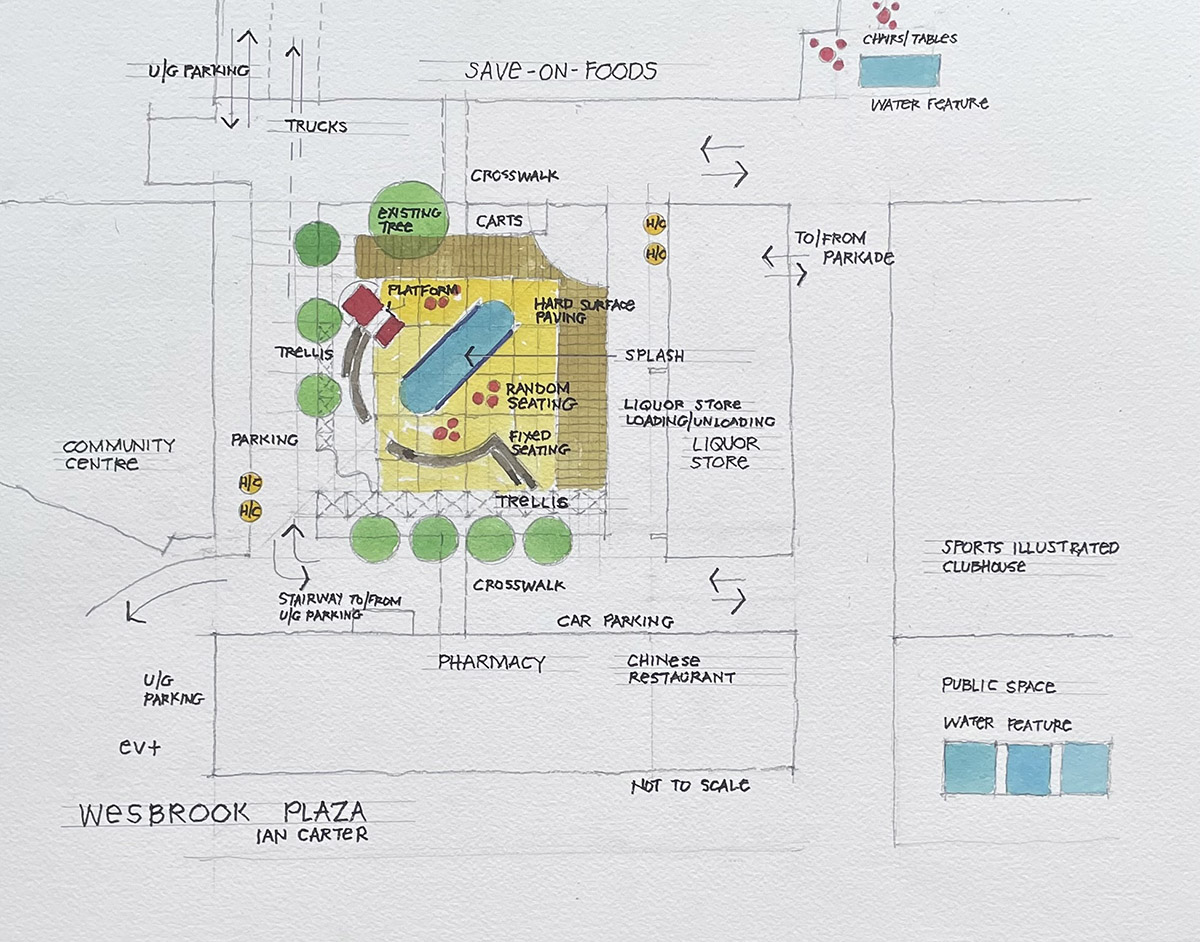I am writing about the recent article featuring Ian Carter’s proposed redesign for the Wesbrook Village parking lot (“A More Pedestrian- Friendly Wesbrook Village” – The Campus Resident, March 6), and the (mostly) negative responses published in the most recent issue of the paper.
Lest the paper hear only from one side, I wanted to write briefly in support of exploring the redesign proposed by Mr. Carter.
We have long found the parking lot to be unfriendly to pedestrians, especially children, and have felt that there could be a better use of this central space in our community than the short-term storage of personal automobiles. Granted, accommodations should be made for those with disabilities and mobility challenges. And, of course, were the UNA to explore the redesign in earnest, they should solicit community feedback and commission various studies of the potential impact of any changes. However, I suspect some of the concerns with the proposal overstate their case.
I would be curious to see a study on how many shoppers arrive by automobile and the potential impact of removing some surface parking. Many studies elsewhere have shown that making commercial areas more pedestrian and cycle-friendly results in more commercial activity and not less. Likewise, I am not convinced that Save- On-Foods would dismiss the proposed changes out of hand. The other grocer on campus, Urban Fare (also owned by the Jim Pattison Group), is located on just this kind of pedestrian plaza. Lelem Village has a dozen or so surface parking spaces in its northwestern corner, but all other parking spaces are underground.
It may be true that by removing surface parking, some residents may drive further afield to shop, producing more emissions. However, by removing surface parking, some residents who would have otherwise driven will walk, cycle, or take public transportation, negating these emissions. The claim that the underground parking is nearing maximum capacity also needs to be tested. As a parent of a small child, I am also curious to know how an escalator poses challenges to families.
It also bears remembering that this parking lot neighbours a community centre frequented by children and seniors, a daycare, a high school, and the future site of a primary school. These groups would benefit from the proposed redesign. Why should the convenience of residents who are adults of sufficient ability and financial means to own and operate an automobile take priority over other members of our community—like these—who cannot?
Similarly, why should members who arrive by car from other neighbourhoods take priority over residents who live in Wesbrook and bear the costs of air pollution, noise pollution, and reduced pedestrian safety, especially when underground options are available?
Finally, I am not convinced by the argument that new density on campus means we should preserve as much surface parking as possible.
When you look at the world’s dense and desirable urban areas, you see exactly the kind of redesigns proposed by Mr. Carter. Think of Paris, which has limited private automobile access to streets near schools and has pedestrianized the banks of the Seine. Think of Copenhagen with its car-free pedestrian centre. Think of Amsterdam with its traffic-calmed cycling streets. Think of Tokyo with its off-street parking regulations. Think of Montréal, which pedestrianizes central streets during the summer months. And think of London, New York, and Singapore, which have implemented congestion pricing. These cities know that, with increased density, there are often better uses of limited urban space than the movement and storage of private automobiles above ground.
In short, I allow that more discussion and study are needed. However, I suspect the UNA would find more support from fellow residents than these criticisms suggest. I would welcome more consultation and discussion by the UNA board. A limited-time pilot using cheap planters, jersey barriers, paint, lawn chairs, and picnic tables would give residents a concrete sense of what the proposal entails and any disruption it might cause.
JOSHUA WALKER, RESIDENT
